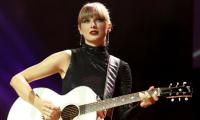The abortive bid by a faction within Turkey’s armed forces to depose Turkey’s elected President Recep Tayyip Erdogan on July 15 presented a horrifying scene of carnage. The images of demonstrators being mowed down by tanks and of F-16 fighters and Cobra attack helicopter letting loose their devastating fire power on civilians was terrifying in that it showed a wanton contempt for the lives of fellow citizens by rogue elements in the Turkish armed forces.
The attempted coup showed a fractious military with a minority of serving and retired officers involved in the plot to overthrow Erdogan’s government. To present a façade of unity in the armed forces, the Chief of General Staff, Hulusi Akar, a four-star general and the highest ranking military officer in Turkey’s armed forces was taken hostage by some of his closest aides and asked to sign a declaration of martial law. This he courageously declined to do even when, according to the Economist, a belt was tightened around his neck in a chokehold.
The plot failed almost at the outset for a host of reasons. Most importantly, President Erdogan who was on a vacation in Marmaris, a coastal resort town in southwest Turkey, had been tipped off by military intelligence such that he left his hotel just 15 minutes before three rebel commando teams arrived to kill or capture him.
The plotters also failed to get control of Istanbul’s Ataturk airport, allowing the president’s aircraft to land there. Prior to landing at Ataturk airport, the president’s aircraft had been pursued by two putschist aircraft that were harassing his plane but did not fire reportedly because the pilot had convinced them that it was a commercial flight.
Because their plans had been uncovered, the insurrection started six hours before its scheduled time at 10pm on July 15 when the crowds were still thronging the streets of Istanbul. This meant that any movement of military vehicles with personnel attempting to take over key installations and facilities including airports and television stations was impeded by street traffic. One obvious reason military interventions are undertaken in the dead of night is because the roads are clear and the element of surprise is at its greatest which means that the ability of the government to rally its supporters is greatly diminished.
Another key failure of the putschists was their inability to control the flow of information through which they could have shaped the media narrative. The state television station, TRT, was taken off air but private television broadcasters continued with their transmissions. The putschists were unable to gain control of Turksat, which provides satellite transmission for television stations, as well as the cellular phone communications networks. This allowed President Erdogan to use FaceTime to appeal to his supporters through a reporter who video-streamed his address to the nation through CNN Turk.
Fortunately the plot began to unravel within hours and rebel soldiers on the Bosporus Bridge (now renamed the ‘15th July Martyrs Bridge’) were seen in the early morning hours the next day abandoning their weapons and signaling their intent to surrender.
In the final analysis, the coup failed because the rebels underestimated the determination of the Turkish people to protect their hard-won democratic rights. A total of 208 fatalities occurred among the supporters of the elected government including 145 civilians from all walks of life and 60 police functionaries. Some 1500 persons sustained serious injuries. As the three main political parties in opposition came out in outright condemnation of the coup attempt, any presumption by the putschists that there was sufficient animus against the Erdogan government to make the coup politically acceptable also proved to be illusory.
In the aftermath, however, the reaction that has been forthcoming by the Erdogan government is a matter of concern to independent observers since it appears to be a systematic attempt to target those who oppose the government’s ideological stance because of their alleged sympathies with the US- based cleric Fethullah Gulen. Indeed, the speed with which a sweeping purge was launched under the cover of a state of emergency leads one to suspect that the government had been waiting for an opportune moment to take action.
Unless there is evidence that the sacked or suspended teachers, judges, journalists and other ‘Gulenists’ were planning to throw off their robes and pens and take up arms to engage in an insurrection against the regime, there remain doubts about the reason for their victimisation. If sympathising with an ideology other than the official government line is a criminal offence then one might as well be living in an Orwellian state. For his part, Gulen in an essay written in the International New York Times on July 23rd writes that he condemns the coup attempt in Turkey in the strongest possible terms since his philosophy is “antithetical to armed rebellion”.
Before July 15 few outside Turkey had heard about or knew of Gulen and his movement. Because of the Turkish government’s accusations, Gulen is now a world renowned figure and also a symbol of opposition to the Erdogan government. By denouncing his supporters and depriving them of a livelihood even to the point of stopping them from leaving the country, Erdogan is only storing up trouble in a country that is already beset with problems stemming from the war in Syria, Kurdish separatists, Islamic State (Isis) instigated terrorism, and the hosting of two and a half million refugees.
One of the reasons the Turkish people stood up to defend the elected government is their high level of political engagement. Thus in the snap parliamentary elections of November 2015 the turnout was 85.2 percent whereas in the June 2015 parliamentary elections voter participation was 83.9 percent. President Erdogan himself received 52 percent of the votes cast in the presidential election of August 2014 in which the overall turnout was 74 percent of eligible voters.
There is little parallel between the situation in Turkey and that in Pakistan in terms of political awareness and exercise of voting rights. The highest rate of voter turnout witnessed so far in any parliamentary election was in 2013 with a voter participation rate of 55 percent (up from 44 percent in the 2008 election, which was affected due to the boycott by Imran Khan’s PTI).
With such a low level of political participation by the public, any political party whether in power or in opposition, does not have the depth of support especially in all the provinces and in the major cities of the country that could result in the sort of mobilisation that we saw in Turkey to prevent a legitimate government from being overthrown. It has not happened in the past in Pakistan even when as popular a leader among the masses as Z A Bhutto was overthrown. And given what we know about the competence and integrity, or lack thereof, of the elected and unelected leaders we have been living under over the past several decades, it is unlikely to happen even today notwithstanding the widespread penetration of social media and use of smartphones.
The writer is a group directorfor at the Jang Group.
Email: iqbal.hussain@janggroup.
com.pk
MPAs ask for their salaries and benefits to be at par with high court judges and exempt from tax
This system fosters and places premium on VIPs, facilitating VIP culture, which is alive and kicking
Imagine this waste covering over 15,500 cricket stadiums, piled three meters deep every year
If there is one thing that can be gleaned from politics today, it is that we no longer speak same language
Postman argues that “typographic mind” was yielding to “televisual mind”
Pakistan is well poised to meet opportunities that Artificial Intelligence will offer for developments in industries







